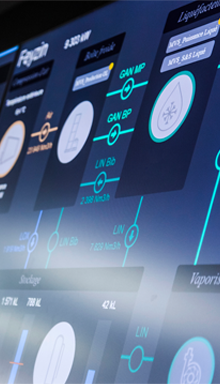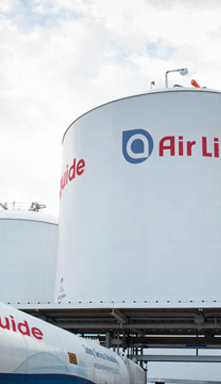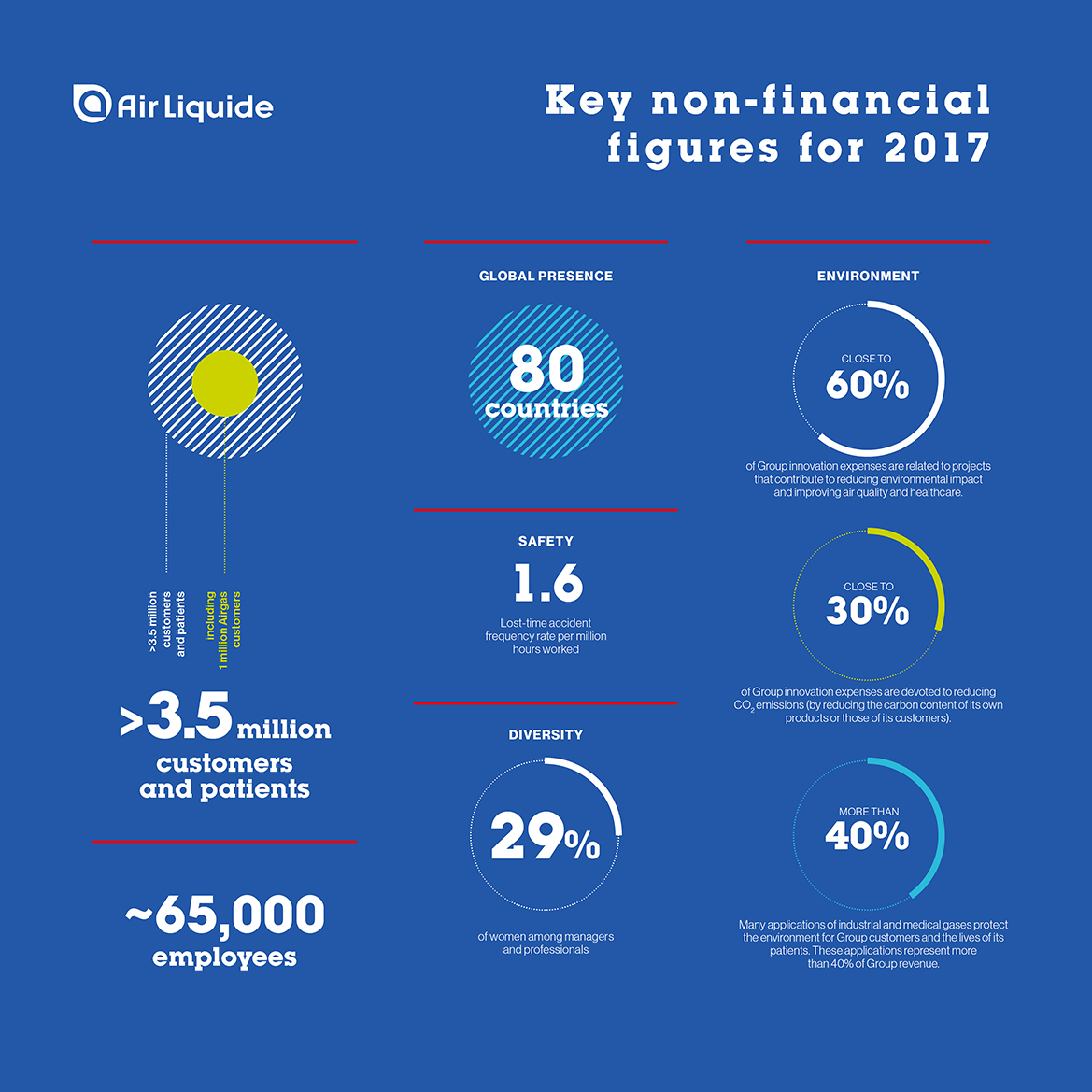
Leveraging digital transformation
In just a few years, the digital revolution has changed how we live, how we communicate, and how we work. Open to the major changes taking place in the world, and thanks to its strong capacity for innovation, Air Liquide is transforming its production operations, incorporating the latest digital technologies in order to develop production units that are more efficient, safer, and more agile.
The Smart Innovative Operations Program developed by Air Liquide is organised around the automation and centralisation of operations, the anticipation of breakdowns, and the optimisation of the performance of every production unit.
Operating data from production units are being collected and analysed in order to optimise equipment maintenance and anticipate incidents. Ultimately, these measures will lead to even better service for customers whose business depends on the reliable supply of gases (oxygen, nitrogen or hydrogen).


Inside Air Liquide’s Fab SIO, multidisciplinary teams comprised of experts in various fields - industrial production systems, information technologies, digital transformation, and R&D - are delivering turnkey solutions that will accelerate deployment of the program at the global level.
One year after the launch of the first remote operation center in France and in China, Air Liquide inaugurated in 2018 its Smart Innovative Operations (SIO) Center for the Southeast Asia Pacific region. The SIO Center enables the remote management of production for 18 Air Liquide Large Industries production units spanning eight countries across the region, as well as optimising energy consumption and improving reliability at these sites.
As for the performance optimisation program, it was successfully implemented in the United States in 2016 for units that supply the hydrogen network of the Gulf of Mexico. It combines economic and environmental performance by reducing the energy use of the production plants.
In this digital revolution, Air Liquide always puts human beings at the heart of decision-making processes. New jobs are being created and new fields of expertise are developing around new tools. In the field as in the plants, jobs and careers are evolving. Technicians use tablets, 3D scanners, connected glasses, video tutorials to share information as well as to benefit from the Group's technological expertise at all times.



